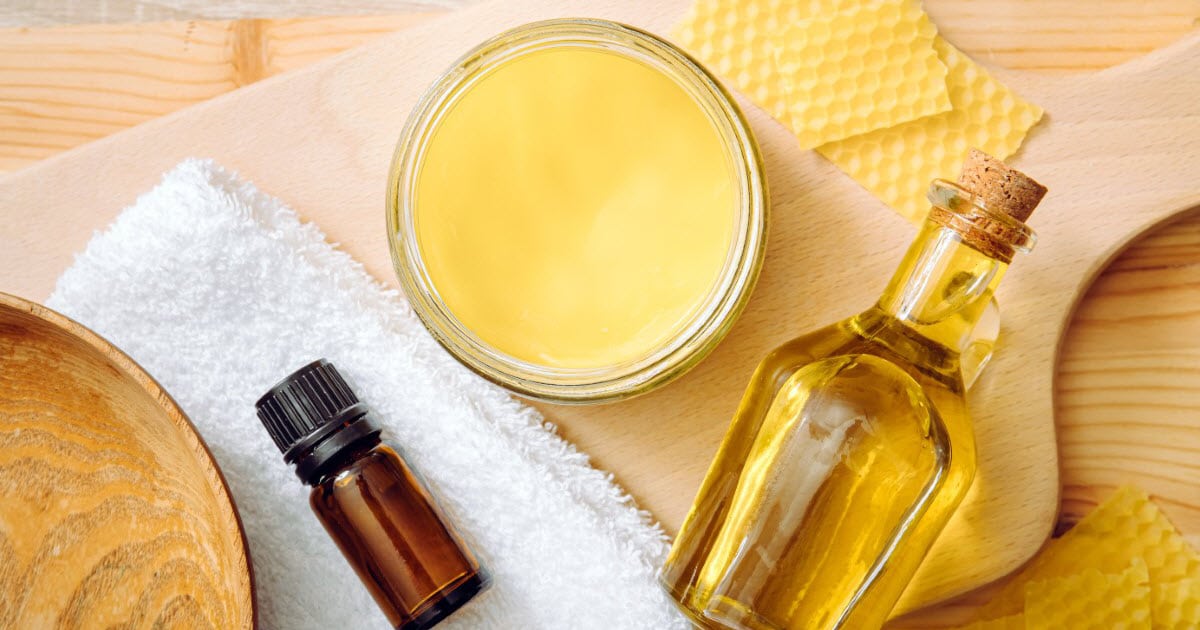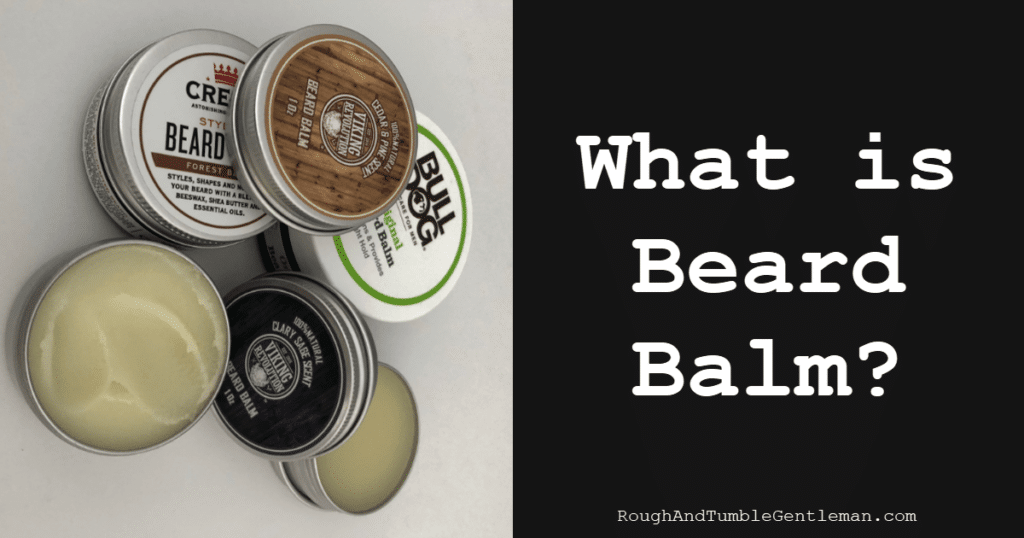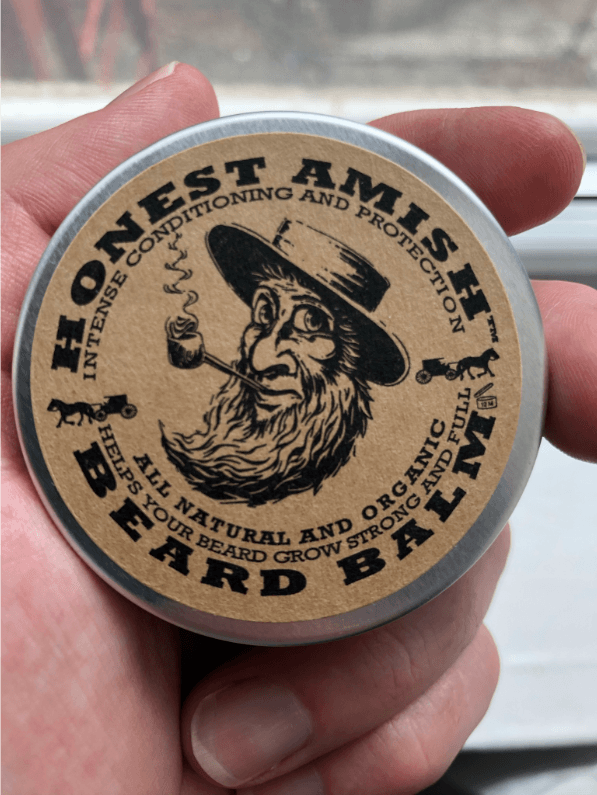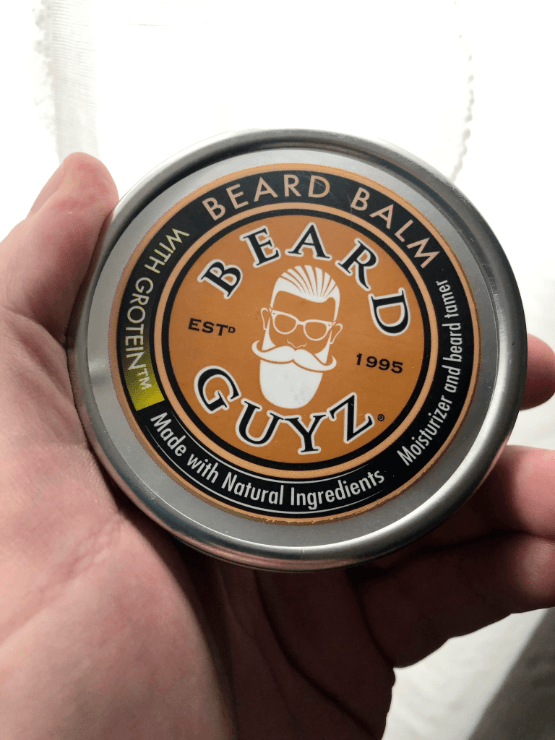In today’s article, we’ll give you three DIY beard balm recipe options that anyone can use as they learn how to make beard balm at home. Along with these beard balm recipes, we’ll share some tips on how to customize each recipe so you can create your own “personalized” variety of beard balm, with whatever fragrance and nutrients you please.
We’ve got some quick questions for you. Are you…
- Someone who has a beard, or someone who knows someone who has a beard? and
- A “do-it-yourself” type, who likes to make stuff on your own?
If so, this is the post for you.
Learning how to make beard balm at home can be a ton of fun if you want to design your own signature scent, make a line of gifts for others, or—if you want to think big, and start your own beard balm company!
It’s can also be a fun way to spend some time with a significant other.

Let’s dive in:
3 Easy Recipes for Beard Balm
To get you started on your DYI-balm adventure, we’ve curated a few recipes that will teach you the basics. Keep that in mind as you go through them—that they’re pretty simple—and in the next section, we’ll show you how to step it up any way you like.
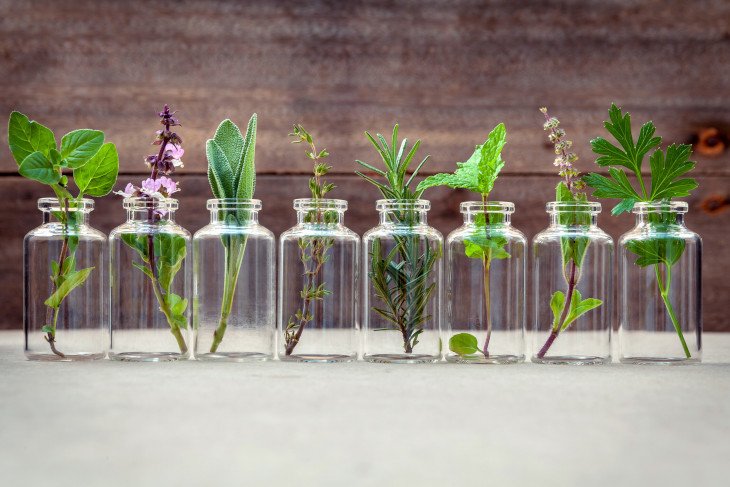
A Basic, No-Frills Balm Recipe
This recipe is incredibly simple and doesn’t force you to buy too many different ingredients. When you’re just starting out, it’s an ideal formula to try, and as you gain a bit more confidence, you can change it up as you wish to create your own customized beard balm that’s perfect for your needs.
Another bonus is that you can use these ingredients in a lot of other DIY beard care recipes, like our DIY beard conditioner or DIY shaving cream.
Ingredients:
- 2 ounces of white beeswax pellets
- 2 ounces of shea butter
- 1.5 ounces of jojoba oil
- 10-15 drops of cedarwood essential oil
Instructions:
Step 1: Heat Things Up. To start, melt your beeswax pellets, shea butter, and jojoba oil together on low heat. This will allow your ingredients to mix together into a perfectly textured balm. Do this on extremely low heat to avoid boiling the oils. You can even use a double boiler (i.e. fill a pot with water, bring it to a boil, and then place a second metal pot or bowl filled with your ingredients on top of it).
Step 2: Stir Until Melted. As your blend starts to melt, stir it gently. Take the mixture off the heat once all of the ingredients have melted into a liquid.
Step 3: Add the Fragrance. Give your mixture just a few minutes to cool down a little, but don’t wait too long since you don’t want it to solidify. Then, add the cedarwood essential oil while stirring continuously.
Step 4: Cool to Completion. Finally, your mixture is ready, and all that’s left is to pour it into your container of choice. Do that part carefully—you can even use a funnel to prevent spillage. Once the tin is full, seal it up and place it somewhere cool and safe so that your liquid mixture can cool down into a semi-solid balm.
Our Recommended Products:
If you need help selecting the ingredients, here are the ones we like (Amazon links):
- Howemon White Beeswax Pellets
- Better Shea Butter Unrefined
- Leven Rose Jojoba Oil
- Gya Labs Cedarwood Essential Oil
- Upgrade Double Boiler
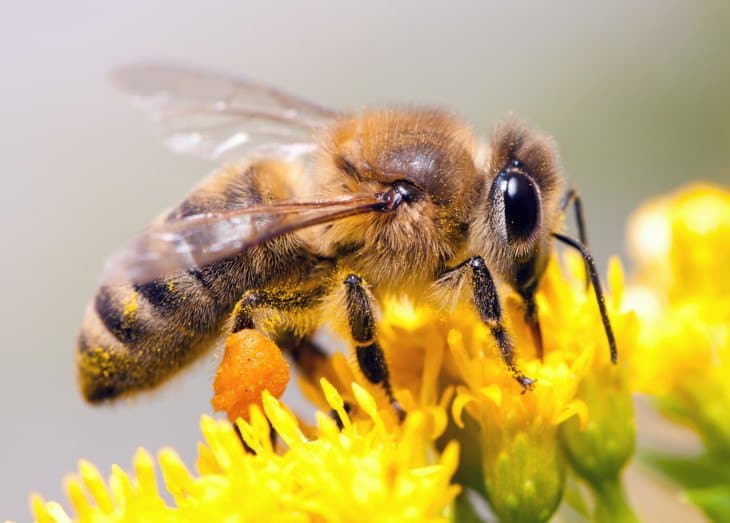
A DIY Vegan Beard Balm Without Beeswax
If you’d prefer a vegan beard balm recipe, we’ve got you covered. Many vegans avoid beeswax because it comes from bees, but thankfully, there are a few vegan wax alternatives that still offer a nice hold.
In this formula, we use candelilla wax instead of beeswax. Candelila is a little denser than beeswax, and it also has a slightly stickier texture. That’s why we only use half the amount we would if it was beeswax, and have substituted grape seed oil which has a lighter texture than jojoba oil to compensate for the stickiness.
Ingredients:
- 2 ounces of shea butter
- 1 ounce of candelilla wax
- 1.5 ounces of grapeseed oil
- 10-15 drops of cedarwood essential oil
Instructions:
Step 1: Melt and Mix. Just as with a non-vegan recipe, the first step is to melt down all of the ingredients (aside from the essential oil), so that they can blend together thoroughly. It’s important to melt them down without disrupting their basic structure too much, so use either very low heat or melt them in a double-boiler. As the ingredients start to melt, stir them continuously so they can blend with one another.
Step 2: Add Fragrance When Cool. Take your mixture off the heat, and give it a few minutes to cool down slightly (but not to solidify). Then, add the essential oil, and mix.
Step 3: Store Until Solid. Finally, pour your beard balm mixture into a container. Even at room temperature, it will cool down completely until it’s solid, so just place it somewhere safe. Check on it in a few hours, and your vegan beard balm should be ready!
Our Recommended Products:
If you need help selecting the ingredients, here are the ones we like (Amazon links):
- Shea Butter
- Candelilla Vegan Wax Flakes
- Brooklyn Botany Grapeseed Oil
- Cedarwood Essential Oil
- Upgrade Double Boiler
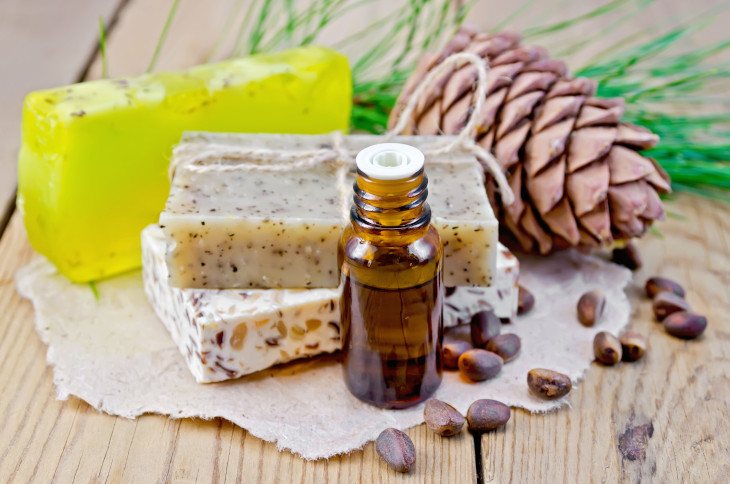
A “Strong Hold” Beard Balm
If your beard is especially unruly, you may want a beard balm with a stronger hold. Strong hold means that the beard balm is a little stiffer and more solid, so it helps to smooth down even the most wiry hairs.
To make this recipe more solid, we made two changes. First, we increased the amount of beeswax in the formula, since that’s the main ingredient responsible for a beard balm’s taming abilities.
Second, we decided to replace jojoba oil with coconut oil. Coconut oil has a higher melting point, so it’s a little more solid, but it’s still very creamy and nourishing to the beard and the skin beneath it. Just note that if you have acne-prone skin, high amounts of coconut oil can be an issue.
Ingredients:
- 2.5 ounces of beeswax
- 2 ounces of shea butter
- 1.5 ounces of coconut oil
- 10-15 drops of cedarwood essential oil
Instructions:
Step 1: Melt Your Ingredients. If you’ve read through the previous recipes, you already know the drill: Place your wax, butter, and oil in a pot (or even better, a double boiler) and melt them together on low heat while stirring continuously. Be very careful with your temperature, as you don’t want the mixture to start boiling.
Step 2: Remove from Heat. Once your blend has melted completely, take it off the heat. Wait a few moments so it’s not too hot, and then mix in the essential oil.
Step 3: Store and Cool. Lastly, now’s the time to put your liquid mixture into a tin or jar, and then to place it somewhere nice and clean so it can cool down to become a solid balm that’ll keep your beard in place.
Our Recommended Products:
If you need help selecting the ingredients, here are the ones we like (Amazon links):
- Beeswax Pellets
- Shea Butter
- Viva Naturals Organic Coconut Oil
- Cedarwood Essential Oil
- Upgrade Double Boiler

Benefits of Making Homemade Beard Balm
If you’re still second-guessing whether you should even try to make your beard balm, here are the reasons why we’re such big fans of making it ourselves.
- No Hidden Chemicals. Commercial products are sometimes filled with synthetic preservatives and secret, “proprietary” fragrances that can hide all kinds of nasties. There are a lot of indie beard balm brands making transparent, safe products, but they can be expensive. When you make your own balm, you’ll know exactly what goes into it.
- It’s Budget-Friendly. While some beard balms are quite affordable, there are many that cost upwards of $20 for a measly 2 ounces. When you make your own beard balm, you may have to invest in ingredients initially, but you can make many times the amount of balm for the same price.
- You Can Customize Endlessly. Some beard lovers are picky and want something very specific while others love to change things up all the time. No matter which one you happen to be, all of the customization options allow you to create exactly the type of balm you want.
- Gifts for All Your Bearded Friends. Giving gifts to other men can be difficult, but once you learn how to make a beard balm that won’t be an issue anymore… assuming your friends have beards, as well.
Customizing Your Beard Balm Recipe
If you’ve read through all of these recipes, you’ve probably realized that with one tiny change, you can make a totally different beard balm. Here are a few more suggestions for how to customize your beard balm to make something that is uniquely your own.
Consider the Beard Balm Ratio
Every beard balm includes three main ingredients that influence its texture: solid wax that provides hold, emollient plant butter that adds moisture and softens the hold slightly, and carrier oil which is oily and too viscous, to make things even softer.
And… that’s it! That’s pretty much the entire makeup of every beard balm out there.
By changing up the ratio of these ingredients, you can totally transform your beard balm’s texture.
Medium Hold. Our main basic recipe creates a beard balm with a medium hold. The ratio in it is almost 1:1:1, or, in other words, equal amounts of wax, oil, and butter. We find that this ratio leads to a texture that works well for both short and medium-length beards since it helps to keep the beard looking nice and neat without making it feel too stiff.
Other factors that might influence the ratio are how thick or thin your oil is (so for example, our basic recipe includes a little less oil since we’ve used a light jojoba oil), or what kind of wax you’ve used (so for example, vegan candelilla wax should be used at half the amount of beeswax).
Lighter Hold. If you have a shorter beard or a naturally very neat medium-length beard, you might prefer a beard balm with a lighter hold. The ideal ratio for a light hold beard balm is one part beeswax to 1.5 parts oil and 1.5 parts butter. In other words, instead of making up a third of the recipe, beeswax should only be a quarter of it.
At this level, it’s a little closer to being a beard cream or butter, with a lot of moisturization and a little less taming-ability. If you reduce the beeswax further, you’ll end up with a cream rather than a balm.
Stronger Hold. If you want a product that offers more hold than the average beard balm but isn’t quite as solid as a beard wax, you can absolutely create a strong hold beard balm. The correct ratio for a strong hold beard balm is 1.5 parts beeswax to one part each of butter and oil, making the wax around 2/5ths of your formula.
Changing the Oil and Butter Ratios. If you want to make smaller changes to your balm recipe’s texture without impacting its hold too much, you can play with the oil and butter ratios instead. More oil and less butter will give you a creamier beard balm, while more butter and less oil will give you a thicker one (although not with better hold—that comes from the wax).
Fragrance Percentage. Finally, there are the essential oils, which should always be used at a conservative ratio of 0.5% to 1% of your formula, to avoid irritating the skin.
Making Larger Batches. Once you’ve perfected your formula and ratio, you can start increasing the sizes of your batches, either to make gifts for friends or to make a larger supply for yourself. Simply double, triple, or quadruple the recipes we’ve listed. You can even use an online recipe converter to help you out. You can also prepare the base in bulk, and then infuse each tin of beard balm with a different scent.
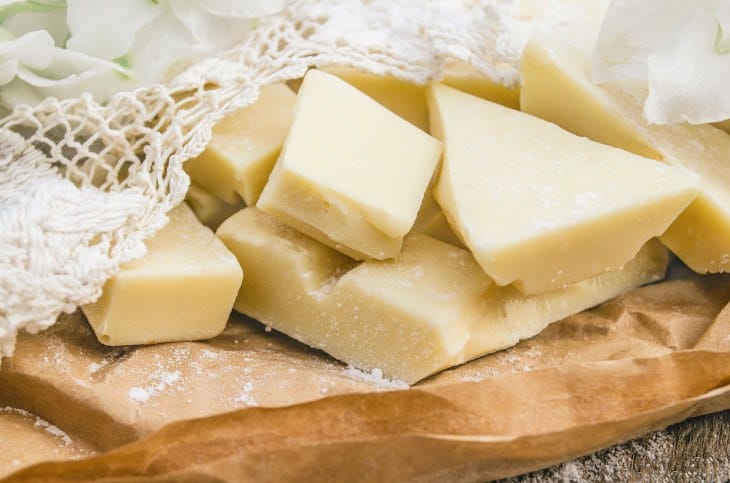
Essential Oils for Beard Balm
Part of the fun of a beard balm is that it gives a light scent that lingers in your beard, complements your other fragrances, and makes you extra irresistible to anyone who comes close.
Cedarwood is our go-to because it has a woodsy, masculine scent that isn’t overwhelming, and it smells great on its own.
You don’t have to stick to cedarwood, though. There are a ton of other essential oils and combinations you might want to try, depending on your scent preferences. If you’re a regular fragrance wearer, just make sure that the essential oils you use in your beard balm won’t clash with the notes in your cologne.
Here are a few essential oils we like all by themselves, along with a description of their fragrance:
- Peppermint: cool, refreshing, a little bracing
- Sandalwood: deep, woody—a clean “barbershop” smell
- Lavender: floral, sweet, inviting
- Musk: earthy, woody, dense—a little like cologne
- Lemongrass: sweet, vibrant, lively
- Vetiver: woody, smoky, leathery
- Bergamot: citrusy—somewhere between a lemon and a lime
- Frankincense: musty, pine, spicy—deep
- Clary Sage: herbaceous, floral, a little fruity
- Oud: warm, woody, smoky—very unique
- Clove: sweet, cinnamon-y, floral
Here are a few essential oil blends you may want to try for a more complex scent:
- Clean and Fresh: Eucalyptus, lavender, and bergamot essential oils
- Citrus: Orange, yuzu, and bergamot essential oils
- Forest Dweller: Cedarwood, eucalyptus, and frankincense essential oils
- Bay Rum: Bay leaf, orange, and clove essential oils
- Vanilla Smoke: Vanilla, tobacco, and tonka bean essential oils
- Fresh Spice: Lavender, cinnamon, grapefruit, star anise, cedarwood, and clove essential oils
- Naked: Your own sensitivities or the sensitivities of the people around you may lead you to avoid fragrances. You can always make a “naked”
beard oil that’s free from essential oils or other scents! If you do choose to do that, you may want to stick to making small batches of beard balm at a time, since the natural oils and butters can develop an odd scent as they start to oxidize, even if they’re still safe to use.
Final Note on Fragrance: remember that, at all times, the essential oil blend should never exceed 1% in your formula. Any higher, and you risk the chance of irritating your skin.
Consider the Wax
There are a few main waxes you can use in your homemade beard balm.
- Beeswax is our go-to ingredient for beard balm solidity and hold. It’s a classic that’s easy to work with, it has both skin and hair benefits, and it’s easy to find online! However, vegans and those with honey allergies will probably want to avoid it.
- Candelilla Wax. This vegan beeswax alternative is great if you’d like to produce a beard balm with a bit more sheen and a softer hold. Compared to beeswax, it’s not quite as sticky but it’s very dense, so you don’t need to use as much to achieve a great texture.
- Carnauba Wax. This is another nice vegan alternative to beeswax, although we think it’s inferior to candelilla. It has a glossy finish, which is polarizing (some men love it, others prefer a more matte finish—we think both can look great!). Where it often falls short is in its texture, which can sometimes be a little grainy even once it has melted completely. That said, it can still work in a pinch!
- Soy wax. Derived from soy, this vegan wax alternative works really nicely and feels slightly more similar to beeswax. The only drawback is that it can be a little harder to find, and we wanted to keep our recipes accessible. We’ve had good luck with American Soy Organics Soy Wax (affiliate link), but there are a few others out there.
Change the Oils and Butters
In your recipe, the oils and butters are big players—they’re responsible for adding a creamy touch and moisturizing effects.
Oils (i.e. carrier oils, not to be confused with essential oils) are light and fluid, but with a greasy (well, oily) texture, while plant butters are solid at room temperature. Both are usually extracted from plant seeds or nuts, and each has its own unique skin benefits.
Every beard balm formula should include a roughly equal amount of butters and oils, although this also depends on the individual oils you choose.
Best Butters to Use in DIY Beard Balm Recipes
Here are some of the butters we think work nicely in beard balms:
- Shea butter is the classic. Its texture is perfectly creamy without feeling too greasy, and it’s very soothing to the skin below the beard. As for the beard itself, it helps to tame and moisturize the hairs, for a neater, cleaner look.
- Cocoa butter is a little heavier than shea butter, but it has an intoxicating natural smell that pairs well with sweet and spicy essential oils (and that’s why you’ll often find it paired with vanilla and tobacco). It’s slightly more comedogenic, so don’t apply it close to the skin if you’re acne-prone.
- Mango butter is a fantastic choice if you want a beard balm with a more matte look (that is, a look that’s not so shiny). It’s a little more dry-feeling than both cocoa and shea butters, with a non-comedogenic profile. It’s still moisturizing, but not as much as the others, so a mango butter might work best for oily skin.
Best Carrier Oils for DIY Beard Balm Recipes
Now, here are some of the carrier oils that work well in a beard balm:
- Jojoba oil is our go-to. It’s technically a wax ester, but that doesn’t stop it from being a moisturizing oil with great texture. It’s neither too light nor too greasy, so it can nourish most skin types. It coats the beard hairs from the outside, which helps give the beard a smoother look while sealing in moisture.
- Coconut oil is a little richer and creamier. It’s semi-solid at room temperature, but with a bit of rubbing, it melts easily. It may cause acne in higher quantities, but in small amounts, it’s great for the skin and hair. Because of its unique molecular structure, it can penetrate through the hair shaft so it’s one of the best oils for brittle beard hair, although it won’t give as much smoothing effect.
- Grapeseed oil is a very light oil with a slightly dry texture. It’s great for those with oily skin or anyone who doesn’t like a very shiny-looking beard. If you do use it, pay close attention to its shelf life, since it tends to expire faster than other oils.
- Olive oil is a nice option mostly because everyone always has it on hand. It’s a little richer than jojoba oil so it’s quite moisturizing, and it penetrates into the hair shaft almost as well as coconut oil. However, it can be a little comedogenic so caution if you’re oily. If you’re planning to make a naked beard balm, it might not work since it does have a stronger scent than other oils.
- Sweet almond oil is a wonderful oil for those with dry or sensitive skin beneath their beards. It has some wonderful soothing effects and it moisturizes the skin well. It’s composed of a blend of fatty acids that are known for their hair-fortifying effects, so it’s a good alternative to coconut and olive oils, with a lighter texture and scent.
- Apricot oil is another fun oil. It’s very similar to almond oil, but just a touch lighter.
- Argan oil has become popular in recent years for its high quantity of vitamin E. It’s a fantastic anti-aging oil that offers both external and internal protection to the hair. As far as texture goes, it sits somewhere between grapeseed and apricot oils, so it’s nice for all skin types.
- Vitamin E oil is technically not an oil. It’s a vitamin, although it’s often sold diluted in oil. Either way, it can be a very beneficial ingredient in your beard balm. Even a tiny amount of it (around 0.5%) will add a few more months to your beard balm’s shelf-life, especially if you’ve used grapeseed oil or another oil with a short shelf-life. When used at around 2% or more, it’s also a soothing antioxidant that protects both your skin and hair.
Don’t be afraid to mix and match these oils and butters, and to play with ratios to achieve different results! Just make sure that they still fit into the same ratio based on the level hold you want.
For example, if your recipe calls for two ounces of shea butter, you can use one ounce of shea and one ounce of cocoa butter instead, and keep the same overall ratio with only minor changes to texture.
With a combination, you can enjoy multiple unique properties for a softer, more well-groomed beard and happier skin underneath it.
How Long Does Beard Balm Last?
Our basic and strong hold DIY beard balm concoctions should last for around 6 months, as long as you store them correctly. The vegan recipe contains grape seed oil, which isn’t very stable, so it will expire within 3 months or so. By adding vitamin E to your recipes, however, you can extend their life by a few months, and maybe even up to a year. Nice!
How to Store Your Beard Balm
For your beard balm to stay fresh for as long as possible, it’s important to store it correctly, in a clean, sealable tin or jar. It’s best to choose a shallow container, so it’ll be easier for you to scoop out the beard balm when you want to use it.
Your container will act as a mold for your beard balm, so you’ll need to pour your mixture into it while it’s still liquid, and then it’ll solidify in the tin.
Make sure to choose a container made of metal or glass, since plastic can react poorly with the essential oils in your formula.
Become the Beard Alchemist You Were Meant to Be
Whether you stick to the basics or decide to go all out with a customized beard balm recipe, chances are very strong you’re going to feel like a beard wizard. Embrace it, amigo.
One of the wonderful things about making your own beard balm is that it’s difficult to mess it up too badly. As one of our favorite bearded painters liked to say, “We don’t make mistakes—we just have happy accidents.” Even a bad batch will probably work well—just don’t overdo it on the essential oil, because that can irritate your skin.
Here’s to your first creation! Enjoy it—be good, have fun, and happy beard!
Michael Morris is the head writer here at Rough and Tumble Gentleman. He's got a ducktail beard and loves Brazilian jiu-jitsu. He's married to the woman of his dreams and lives in Brooklyn, NY.

